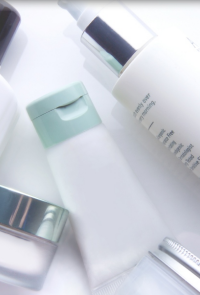
|
|
Psoriasis Treatment:
|
|
|
|
Related:
|
|
|
|
|
Combination Therapy
Phototherapy + Drugs/Tar/Anthralin
1. Acitretin
It has been widely accepted that combining acitretin with phototherapy (either UVB or PUVA) is beneficial. PUVA is being used less because of the risk of skin cancers. Consequently, UVB has become more accessible and most commonly used in combination with retinoids to treat moderate-to-severe psoriasis that is unresponsive to topical therapy. The general dosing schedule involves starting with a low dose of acitretin in the range of 10 to 25 mg daily about 2 weeks before adding UVB. This combination is one of the safest treatments available for moderate-to-severe psoriasis with no long-term adverse effects documented. The short-term effects of dry skin, thinning hair and photosensitivity can be reduced by lowering the dose of both the retinoid and UVB. The dose of UVB is reduced to avoid phototoxicity. Acitretin in combination with narrow-band UVB has been shown to be more effective than broad-band UVB. Some believe this combination is as effective as PUVA. It is certainly simpler and safer, but the long-term remission rate may not be as high as with PUVA.
2. Methotrexate, Cyclosporine and UVB
This synergistic combination allows a reduction in the total dose of both methotrexate and UVB. There is frequently a rebound after stopping both of these modalities. Cyclosporine can be used in combination with UVB, but this has not been studied extensively. There is a concern about increasing the risk of squamous cell carcinoma because of the immunosuppressive effect of cyclosporine combined with ultraviolet light.
3. Topical Calcipotriol/Tazarotene and UVB
Studies suggest that UVB and calcipotriol produces a much greater response than UVB and a placebo ointment. UVB twice a week combined with calipotriol was as effective as UVB administered 3 times a week. The calcipotriol should be applied more than 2 hours before UVB exposure. Tazarotene can be combined with UVB, which is particularly useful for resistant lesions. However, this combination increases the susceptibility to burns because of tazarotene's thinning effect on the epidermis. UVB doses are usually reduced by up to one-third when tazarotene is used in this combination.
4. Tar and Anthralin
The Goeckerman regime is still one of the most effective treatments for clearing psoriasis. This regimen involves combining tar with UVB. The Ingram regime uses anthralin, coal tar and UVB. Short contact tar and anthralin in combination with UVB can produce remission in about 70% of patients. The improvements can be maintained for about 6 months.
|